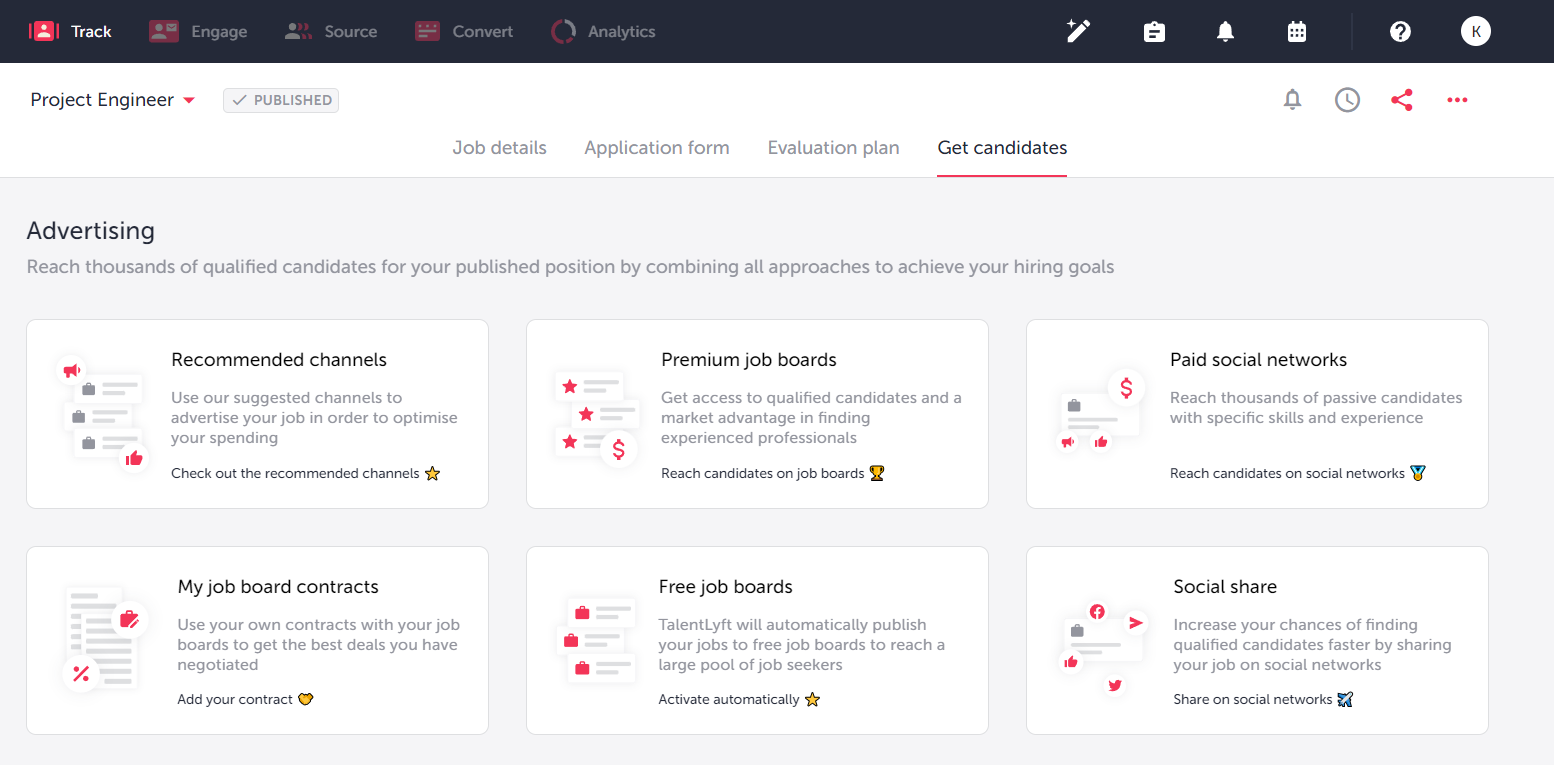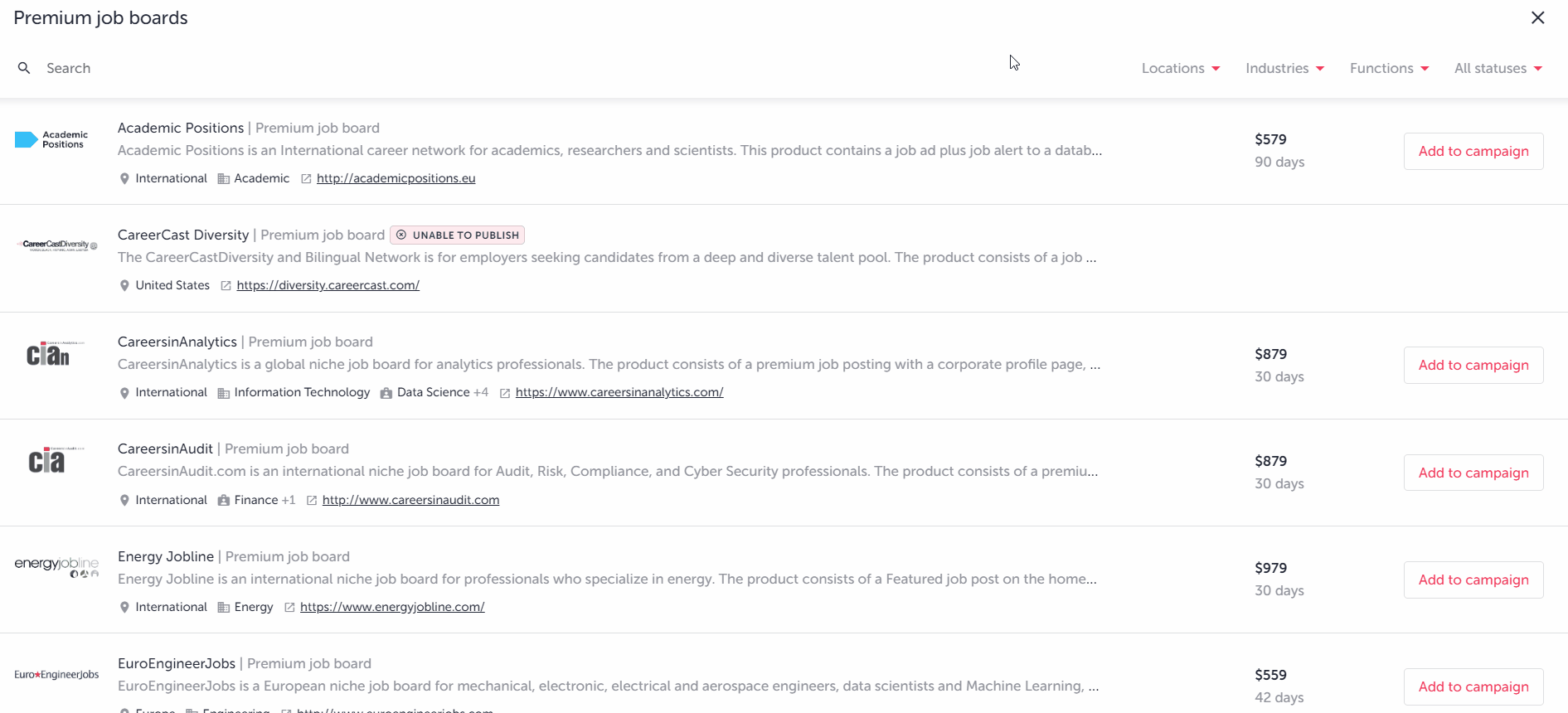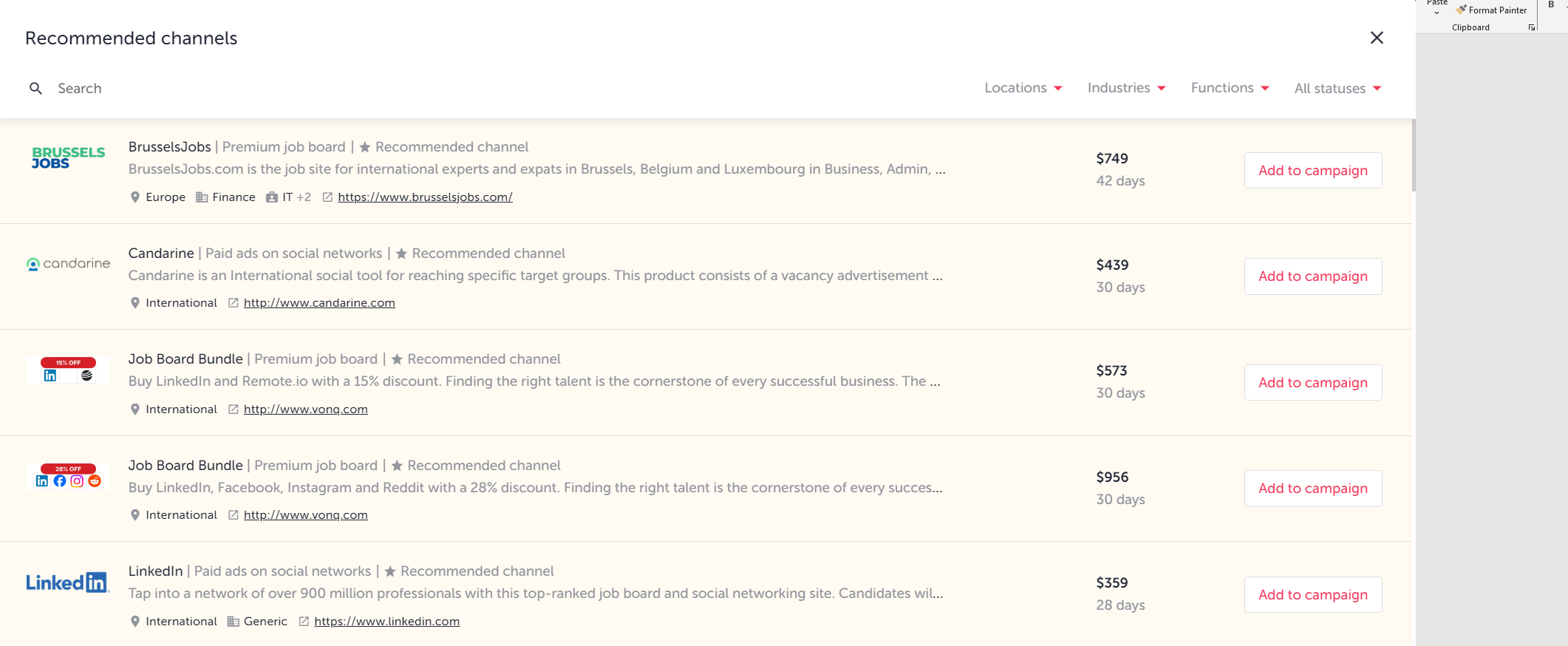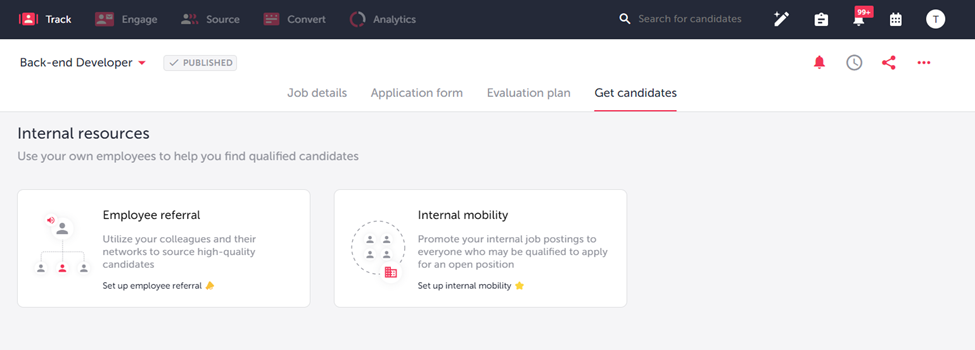![https://adoptoprod.blob.core.windows.net/article/N5uRmwzFXEOnuAFggbShQw.png]()
Understanding Recruitment Advertising
At its simplest, recruitment advertising is the process of promoting job opportunities within an organization. But it involves far more than just announcing an open position. It's a carefully crafted message designed to reach and engage the right audience. This type of advertising leverages various platforms – from traditional print media to modern digital channels – to communicate with potential applicants.
In 2024, recruitment advertising is almost a fundamental part of any proper talent acquisition strategy, serving as a strategic approach to attracting candidates to job vacancies. It's an intersection of human resources, marketing, and branding with targeted efforts to attract individuals who are not just qualified, but also a good cultural fit for the organization.
The modern job seeker is not just looking for a job, but for an opportunity that aligns with their career goals, personal values, and lifestyle. As a result, recruitment ads must do more than list job requirements; they need to convey the company's culture, values, and the benefits of working there.

Recruitment advertising vs traditional advertising: What’s the difference?
Recruitment advertising and traditional advertising are, essentially, very similar, sharing the fundamental principles of marketing and brand promotion.
Just like when promoting products or services, promoting jobs and employers involves targeting a specific audience, promoting the “brand”, i.e. the employer, and using similar marketing strategies, such as storytelling, emotional appeal, and highlighting unique selling points to captivate the audience's interest.
However, recruitment advertising tends to be more challenging, due to the nature of what is being "sold" and the target audience they are trying to reach.
While traditional advertising focuses on selling a product or service to consumers, recruitment advertising is not just about selling the “product” but the whole experience and an opportunity to potential employees which can be far more abstract and difficult to convey. The messaging in recruitment advertising must, therefore, be more nuanced, focusing on aspects like company culture, career development opportunities, and the overall employee experience.
Also, the target audience seeks not only employment but also an environment where they can grow, contribute, and find satisfaction.
Planning the Recruitment Advertising Process
Effective recruitment advertising requires meticulous planning and strategy. This stage is crucial as it lays the foundation for a successful campaign to attract the right talent. Let’s go through all the steps:
Determining Your Hiring Needs
What are your company’s goals for the foreseeable future? How will the new hires contribute to these goals? How many new people do you need?
Conduct a thorough job analysis to define the responsibilities, skills, experience levels, and cultural fit required for the role. Anticipate future hiring needs based on company growth, employee turnover, and industry trends. Creating a proper hiring plan will enable you to define the talent you need and how to attract them.
Need a hiring plan template?
Download our free Hiring Plan template to plan all your hiring efforts for the following year!
Get the template! Defining the Candidate Personas
Do you know exactly who you are looking for? Create detailed profiles of your ideal candidates for each role. Consider factors like professional background, skills, career aspirations, and personality traits. Research where these ideal candidates look for job opportunities and what factors influence their decision to apply.
When you get a clear picture of your ideal candidate, use all of their characteristics to craft recruitment messages that resonate with them as they will serve as the target audience in your advertising efforts.
Need help in creating your ideal candidate? Download our free Guide on how to create a candidate persona!
Setting Your Goals
Set specific, measurable goals for your recruitment advertising campaign, such as the number of applications, desired quality of candidates, and diversity targets.
It is also important to establish a realistic timeline for each stage of the recruitment process, from advertising to interviewing and onboarding.
Defining Budgets
- Allocating budget effectively: Determine how much you are willing to invest in recruitment advertising and allocate your budget across different channels and strategies.
- Cost-per-hire and ROI: Calculate the average cost-per-hire to ensure that your recruitment spending yields a good return on investment. This includes advertising costs, recruiter fees, and other associated expenses.
- Balancing between paid and organic strategies: Consider a mix of paid advertising (like sponsored job posts) and organic strategies (such as free job boards, social media engagement and employee referrals). We’ll go more into this in the next section.
Choosing the Right Channels for Recruitment Advertising
Selecting the right channels for advertising your jobs is crucial for reaching your ideal candidates and maximizing your recruitment efforts. Each channel has unique characteristics and can resonate with different segments of the talent market. Here's an overview of the main channels and common practices associated with each:
Online Job Boards
Websites like Indeed, Monster, and Glassdoor are popular platforms where companies can post job openings. Besides those, there are thousands of others that you can use depending on the location of your hiring, industry, and other factors. These job boards have extensive reach and allow companies to target specific industries, experience levels, skills, and regions. Posting detailed job descriptions, using keywords for SEO, and leveraging filtering tools to target specific candidate profiles are all tactics you can and need to use to make your job as visible and appealing as possible.
These are great for companies of all sizes and industries but especially those that are hiring in high volumes, like hiring in hospitality and tourism or blue-collar hiring. They are also a great source for filling roles with large talent pools like administrative or IT positions.
Social Media Platforms
79% of job seekers use social media to search for jobs. Social media platforms like LinkedIn, Facebook, and Twitter are powerful for reaching out to potential candidates. LinkedIn, in particular, is tailored for professional networking and job searching, making it an ideal platform for companies to showcase their culture, post job openings, and engage with potential candidates.
Facebook might be more suitable for blue-collar and seasonal hiring, although it can be leveraged to target candidates of any profile if done right. Instagram is great for hiring creative professionals while LinkedIn can be excellent for sourcing highly skilled talent for hard-to-fill or managerial roles.
Careers Page
A company's career page can be a crucial recruitment channel. It's a space where businesses can control the narrative, highlight company culture, and benefits, and publish detailed job descriptions. It's also the official source for job seekers who want to learn more about the company.
Through engaging content, videos, and testimonials, the company can showcase its work environment, culture, and the people who make it a great place to work. Companies can optimize the application process on their career pages, making it easy and user-friendly. A seamless application process, without unnecessary hurdles, may attract more potential job applicants.
Another great tactic is optimizing your careers page for search engines by using relevant keywords, meta descriptions, and other SEO practices so that the career page appears in search results when candidates are looking for job opportunities in the industry.
Build your careers page in a day
Build a fully branded careers page that reflects your company's values with TalentLyft. You can have it up and running in a few hours - no coding required!
Create the perfect careers page! Networking and Referral Programs
Word of mouth and referrals from current employees or industry contacts can be very effective. Many companies set up employee referral programs, offering incentives to their staff to recommend suitable candidates. Networking events, industry conferences, and trade shows are also great for meeting potential candidates in a more informal setting.
Tips for Creating Effective Recruitment Advertisements
Recruitment advertisements are crucial in attracting the right talent and are an integral part of full life cycle recruiting. A well-crafted advertisement not only captures attention but also resonates with potential candidates, compelling them to apply. Here are some guidelines for creating effective recruitment advertisements:
Highlighting key elements of a job ad
Clear Job Titles and Descriptions: The job title should be straightforward, avoiding jargon or internal terms that might confuse job seekers. The description should concisely outline the responsibilities, required qualifications, and desired experience, offering a realistic preview of the day-to-day tasks.
Highlight Unique Benefits and Perks: Emphasize what sets your company apart. Whether it's unique benefits, career growth opportunities, or a remarkable workplace culture, make sure these elements are front and center.
Call to Action: Encourage potential candidates to take the next step by including a clear, compelling CTA. Whether it's 'Apply Now', 'Learn More', or 'Join Our Team', the CTA should be prominent and persuasive.
The Role of Employer Branding in Advertisements
Your employer brand is the market's perception of your company as a place to work. Effective recruitment advertisements should:
Reflect Company Values and Culture: Use the advertisement as a platform to showcase your company's values, mission, and culture. Candidates are not just looking for a job - they're looking to join a community that aligns with their personal values and aspirations.
Showcase Employee Testimonials: Real stories and testimonials from current employees can make your employer brand come to life. These authentic insights into life at your company can be a powerful tool in attracting candidates.
Use Storytelling and Inclusive Language
Use storytelling to create a narrative around the role and your company. Instead of just listing job requirements, tell a story about how the role contributes to the company's mission, the team's dynamic, or the potential for impact. This approach can make the advertisement more relatable and memorable.
Ensure that the language in your advertisement is inclusive, welcoming candidates from diverse backgrounds. Avoid jargon, gender-coded words, or phrases that could be construed as exclusionary. Inclusive language helps in attracting a broader, more diverse candidate pool, enriching your company's talent base and culture.
Related: The Ultimate Guide for Posting Jobs That Stand Out
In-House vs. Agency: Making the Right Choice
When it comes to recruitment advertising efforts, companies often find themselves at a crossroads, choosing between in-house recruitment and hiring an external recruitment agency. Each approach has its merits and challenges, and the right choice depends on various factors including the company's size, the nature of the job market, and specific hiring needs. Here's a comparison of using each way for recruitment advertising efforts:
Recruitment agencies offer the advantage of a broad talent reach, tapping into an extensive network that includes both active job seekers and passive candidates who may be open to new opportunities. They bring specialized expertise, particularly beneficial for roles requiring specific skills or for industries with unique demands. Agencies streamline the recruitment process, managing initial stages like job advertising and candidate screening, thereby speeding up hiring and allowing companies to focus on final interviews and decisions.
However, this service comes at a cost, typically a percentage of the hired candidate's first-year salary, which can be substantial for high-level positions or numerous hires. Also, while agencies strive to understand a company's needs, their external position might lead to a less personalized approach and reduced control over the recruitment process, potentially resulting in a mismatch with the company's culture or values.
In-house recruitment, on the other hand, offers deep insights into a company's culture and a nuanced understanding of its specific needs, ensuring that the recruitment process and candidate selection are closely aligned with organizational values and objectives. This approach is more cost-effective in the long run, eliminating agency fees and building an internal team dedicated to the company's hiring needs. It also offers companies complete control over every aspect of the hiring process, from crafting job advertisements to making the final hiring decisions.
Keep in mind, that establishing and maintaining an in-house recruitment team requires significant resources, including time, staffing, and tools. In-house teams may also face limitations in their reach and the breadth of their network, especially in the beginning as it takes time to build talent pools.
Even though it has its challenges, in-house recruitment still might be the best option for most companies and can be made much more efficient and easy with the right tools as you’ll see in the next section.
Leveraging Technology in Recruitment Advertising
As we’ve said, having an in-house HR team doing all of the recruiting for you has its challenges. But it’s 2024 and leveraging technology to scale your operations whether it’s recruiting or any other part of the business is not only useful but necessary. Let’s see how you can get the best out of every channel with minimal effort:
Role of ATS and Recruitment Software
In today’s day and age it’s hard to imagine handling the hiring process without using some kind of software. Proper recruitment software not only organizes and tracks candidates throughout the process but also automates resume parsing and communication, saving recruiters countless hours and ensuring that candidates stay informed and engaged.
Beyond mere tracking, sophisticated ATS platforms incorporate features like sourcing candidates through job advertising and various other channels. Additionally, many ATS systems integrate with other HR software, creating a seamless flow of information from the moment a candidate applies to when they're hired and onboarded.
Nevertheless, our focus here is on recruitment advertising. So, let’s take a look at how TalentLyft makes this process a breeze:

All the channels you might want to use for recruitment advertising are here.
Let’s say you want to find some job boards to post your jobs to. TalentLyft has over 2500 job boards and platforms ready for posting your first job. All you need to do is to pick the one(s) you like. All the details you need to make the decision are already there. You can choose one or however many you like if you want to diversify your reach and target a broader audience.

The same goes for social media platforms. You can extend your reach by advertising on the most popular platforms and target the exact candidates that match your job criteria.

Emerging Trends
The future of recruitment advertising is shaped by continuous technological innovation. AI is playing an increasingly prominent role. AI-driven algorithms can enhance job matching by accurately pairing candidate profiles with job requirements. They can also predict candidate success in roles, helping to reduce turnover rates.
Programmatic advertising is another game-changer. It automates the buying, placement, and optimization of job ads across multiple channels, ensuring your ads reach the right audience at the right time and at the right price. This not only increases the efficiency of your advertising spend but also frees up your HR team to focus on more strategic tasks.
TalentLyft will even recommend the best-performing channels to promote your jobs on depending on your job's title, industry, and location to get the most out of your campaign budget. This includes paid job boards, social network campaigns, and promotional bundles that combine both.

You can also leverage your existing employees to refer someone from their own network or promote a job internally to them.

All of these options make up for a well-rounded recruitment advertising process and the best thing is – everything is done seamlessly from a single platform, saving you a bunch of time and effort.
Data and Analytics
In recruitment advertising, data is king. It offers insights into the effectiveness of your strategies and guides informed decision-making. For instance, by analyzing data, you can identify which recruitment channels yield the highest quality candidates or the lowest cost-per-hire. Predictive analytics can forecast future hiring needs based on company growth and turnover rates, enabling proactive recruitment planning.
Moreover, data analytics can spotlight trends in candidate behavior and preferences, allowing you to tailor your recruitment advertising accordingly. For example, if data shows that a significant portion of your target candidates is active on a particular social media platform, it might be beneficial to intensify advertising efforts there.
With the ability to create, share and advertise jobs and track everything in one centralized platform, you save a bunch of time, drastically reducing the time to fill a position while streamlining the process to help yourself and your teams be more efficient and productive in hiring.
Most importantly, it lets you focus your efforts on the “human” side of recruiting while you let the tool handle the operations.
Try TalentLyft for free!
Create your first job, post it on multiple channels and receive your first candidates in under 24 hours! Try it for free right away - no credit card required!
Get candidates! Measuring the Effectiveness
To ensure that recruitment advertising efforts are not in vain, it's crucial to measure and analyze the effectiveness of your campaigns. Doing so not only helps in understanding the return on investment but also in refining strategies for future recruitment drives.
Key Metrics
Several metrics can provide insight into the effectiveness of your recruitment campaigns. These include:
Application Rate: Measures the number of applications received. A high application rate generally indicates that your job ads are reaching the right audience and are compelling enough to prompt action.
Quality of Candidates: It's not just about the number of applications but the quality of those candidates. Metrics such as the number of candidates moving to interview stages, or the percentage of offers accepted, can provide insight into the quality.
Cost-Per-Hire: This measures the total cost associated with hiring a new employee, including advertising costs, recruiter fees, and other expenses. A lower cost-per-hire indicates a more efficient and cost-effective hiring process.
Time-to-Hire: Tracks the time taken from the job posting to accepting an offer. A shorter time-to-hire can indicate efficient processes and effective advertising.
Source of Hire: Identifies which channels (job boards, social media, etc.) are bringing in the candidates who are eventually hired. This helps in understanding the most effective platforms for your recruitment needs.
Learn more: 10 Essential Recruitment Funnel Metrics
Adjusting Strategies
Data without action is futile. The insights gained from analyzing these metrics should inform and refine your recruitment advertising strategy:
Optimize Ad Spend: If data shows that certain channels are more effective, you can allocate more of your budget there and cut back on underperforming platforms.
Improve Candidate Quality: If the quality of candidates is lacking, consider revising your job advertisements or the platforms you're using. Maybe the message isn't clear, or perhaps you're not reaching the right audience.
Enhance Candidate Experience: If the time-to-hire is long, or candidate feedback is negative, review your recruitment process. Look for bottlenecks or areas where candidates seem to drop off and address these issues.






















